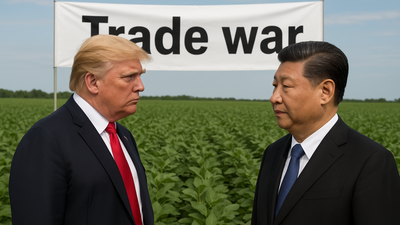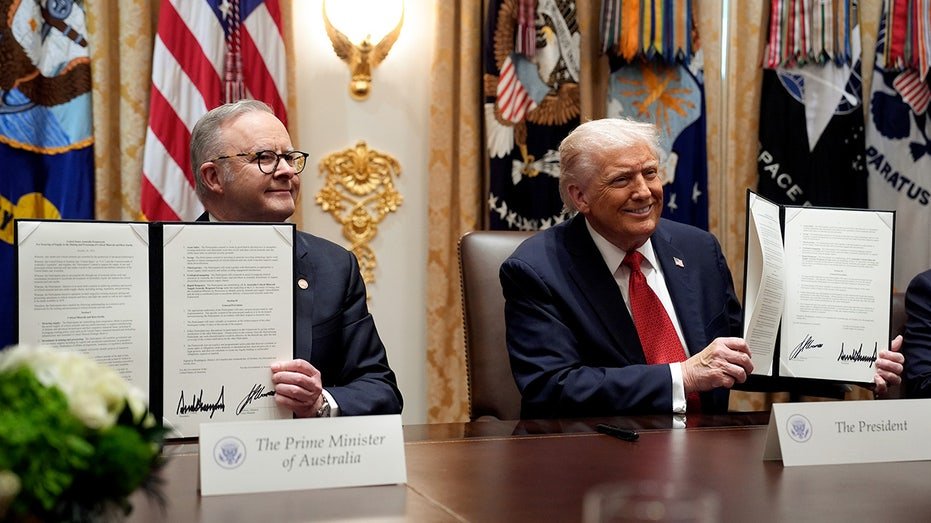
For the first time in seven years, China has completely halted imports of US soybeans, leaving American farmers cut off from their largest overseas customer just as the autumn harvest begins. September shipments from the US fell to zero, a sharp contrast to last year’s 1.7 million metric tons.China’s overall soybean imports remained at elevated levels, with South American shipments surging to fill the gap.In September, China purchased 12.87 million metric tons of soybeans, its second-highest monthly total on record. Brazilian shipments rose 29.9% year-on-year to 10.96 million tons, accounting for 85.2% of China’s total imports, while Argentina’s deliveries jumped 91.5% to 1.17 million tons, or 9% of the total. Analysts attribute the zero US imports primarily to Beijing’s tariffs and the depletion of previously harvested US supplies, known as old-crop beans.
Soybeans as a bargaining chip
The soybean standoff comes amid escalating trade tensions. President Donald Trump, speaking aboard Air Force One, said he would consider reducing tariffs on Chinese goods only if Beijing resumes buying US soybeans and makes other concessions, including ending its export restrictions on rare earth minerals and halting the flow of fentanyl.“They’re paying us a lot of money in tariffs, and they’d probably like to have it be less,” Trump said. “We’ll work on that, but they have to give us some things too.” He called the halt in soybean imports an “economically hostile act” and threatened to suspend used cooking oil imports from China in response.The US recently announced a new 100% tariff on Chinese imports, bringing the total duty on some goods to a staggering 130%. “It’s no longer a one-way street,” Trump said, warning that no deal would be made unless China agreed to resume soybean purchases at previous levels.Beijing, meanwhile, appears to be leveraging soybean trade as a strategic tool. “China is looking to use the soybean trade with [the] US as a chip in future talks,” said Rosa Wang, an analyst at Shanghai-based agro-consultancy JCI, as reported by S&P Global.According to the Washington Post, Chinese officials see withholding soybean purchases as a low-cost way to exert pressure on Trump ahead of his expected meeting with President Xi Jinping at the Asia-Pacific Economic Cooperation (APEC) summit later this month.
South America steps into the breach
China’s pivot to South America has accelerated in recent months, with Brazilian soybeans dominating the market. For the January–September period, China imported 63.7 million tons from Brazil, up 2.4% year-on-year, and 2.9 million tons from Argentina, up 31.8%. Market observers note that rising Brazilian yields, competitive pricing, and counter-seasonal harvests have made it the preferred supplier amid the trade dispute.“China has become more reliant on soybeans from Brazil due to the trade disputes between the US and China,” Darin Friedrichs, co-founder of Shanghai-based Sitonia Consulting, told SCMP. “While China is working to diversify supplies, it is difficult to find sources that provide exports on the same scale as countries like Brazil or the US.”Chinese state-owned companies have also invested heavily in Brazilian ports, including Paranaguá, Açu, and Santos, ensuring steady throughput for their soybean purchases. According to the Brazilian grain exporter association ANEC, China imported 7.2 million tons from Brazil in September alone, representing 93% of Brazilian soybean exports for the month. Argentine shipments surged following a brief suspension of export taxes designed to stabilise the peso and attract dollars.
American harvest in limbo
The lack of US soybean imports is a major blow for American farmers, who rely on China for nearly half of their overseas soybean sales. “We’re in uncharted territory in terms of a complete absence of Chinese buyers for the harvest that is currently coming in,” Even Pay, director of agriculture research at Trivium China, told the Washington Post.Despite the zero US imports in September, Chinese buyers still hold significant outstanding demand for soybeans in December and January. Some analysts predict a potential window for US exports later in the season, as South American supplies are gradually consumed. Jack Larimer, principal crops analyst at S&P Global Commodity Insights, said China may start purchasing US soybeans in January, with shipments potentially reaching 8.5 million metric tons for the marketing year 2025–26.For Beijing, halting US soybean imports has been a relatively low-cost strategy to pressure Washington while securing alternative supplies. Analysts suggest that the move not only protects Chinese stockpiles but also provides leverage in broader trade negotiations. “China’s in a pretty good position. We really want to resolve this. They don’t need to,” said Phil Luck, director of the economics program at CSIS..With negotiations between Chinese Vice-Premier He Lifeng and US Treasury Secretary Scott Bessent planned for later this month, the outcome of soybean purchases remains a key bargaining chip in the ongoing trade war. For now, US farmers face an uncertain harvest season as China continues to rely heavily on Brazil and Argentina for its soybean supply.(With inputs from agencies)







